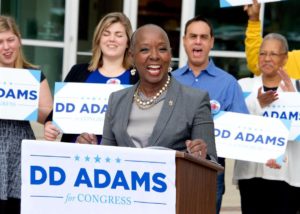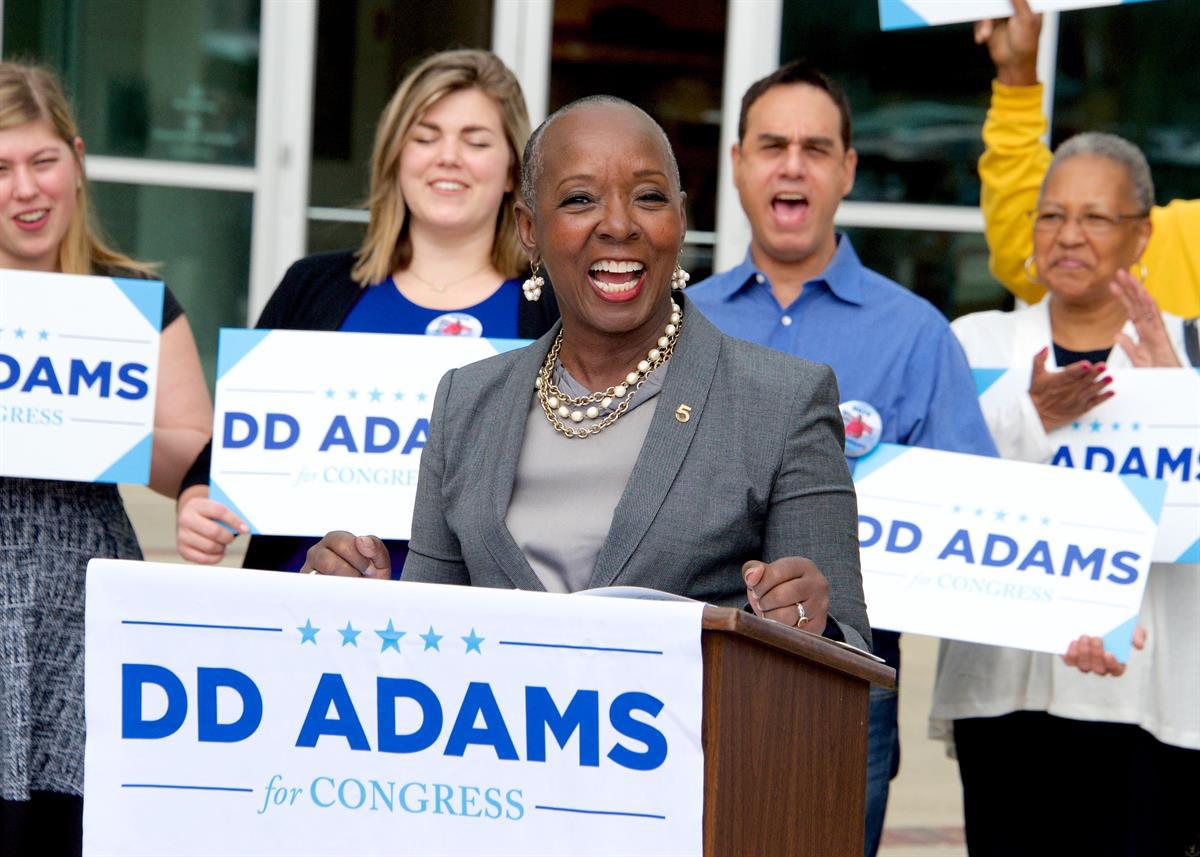
After the 2016 election, the political engagement in the United States has shifted. As a result of a tumultuous past two years, people who were previously apathetic towards politics have started to get more involved. People who didn’t vote in 2016 now organize voter registration drives and women, particularly Democratic women, have been challenging local incumbents.
Black women are one of the most powerful voting bases for the Democratic party. They consistently have one of the highest percentages of voter turnouts, and almost exclusively vote for the Democratic party. Black women were a key demographic backing Democratic Senator Doug Jones in the Alabama special election; 98 percent of black women supported Jones, and many mobilized to get out the vote. Contrastingly, only 35 percent of white women voted for Jones.
In 2018, black women are running and winning in unprecedented numbers. They hold just 3.7 percent of state legislative seats— twenty seats in the House of Representatives, and one in the Senate. This year, however, there are fifty black women running for Congress, and make up 11 percent of the Democratic candidates running for Congress (up from 7 percent in 2012). They make up 17 percent of all of the female nominees. Unlike previous years, many running for Congress are in districts that aren’t predominantly black. Jeannine Lee Lake is the Democratic nominee in Indiana’s sixth congressional district— one that is 94 percent white. Other notable black women running this year are Stacey Abrams running for governor of Georgia and Jahana Hayes the first black congresswoman-elect from Massachusetts.
Despite this success, Atlantic Magazine published an article in June wondering whether the national Democratic party organizations were giving enough credit where credit is due. The article pointed out that although many black women had won tough primaries, they received little to no national recognition or funding.
Campbell Turner, a freshman at the University of Virginia, worked on Councilwoman DD Adams’ campaign in his hometown Winston-Salem, North Carolina. For Adams, a well-known councilwoman, finances in her campaign have been an issue. Turner says that the campaign recieved no direct congratulations from the Democratic party because they don’t classify the district as being able to “flip” (Go from Republican to Democrat.) Even when she won her primary, her campaign received no congratulations from the national campaign.
Representatives from the campaigns of both Jeannine Lee Lake (IN-6) and Yvonne Hayes Hinson (FL-6) mentioned that finances have been a challenge, instead having to rely on private donations. Hayes Hinson has about 5 percent of the funds of her opponent, Tea Party conservative Ted Yoho. Malik Moore, assistant for the Hayes Hinson campaign, remains optimistic, saying, “[Ted Yoho] has a huge monetary advantage… so what we’ve been doing is working with what we have. We don’t believe that you should win an election based on how much money you have.”
In an interview about black women in politics with the New York Times, DNC Chair Tom Perez reflected on past treatment of communities of color by the Democratic Party, “We, frankly, all too frequently took them for granted.”
It may be that many black, female candidates are running in Republican districts that are considered too red to be worthwhile supporting. As the Democratic Party tries to win back the House, the national Democratic leaders are focused on swing districts. Only three black women running in swing districts have received financing.
There is an undeniable host of unique challenges that people of color, particularly women of color, face when running for political office in the United States. In addition to racism and prejudice against candidates, six (mostly Republican) states have strict voter ID laws. These ID laws make it particularly difficult for those in underserved communities of color to vote for candidates who represent them, with tactics like requiring voters to have photo IDs in areas where people do not drive cars, and cutting back on early voting opportunities. As of now, in the United States, 90 percent of officials are white and 71 percent are men.
Dr. Niambi Carter, a political science assistant professor at Howard University, says that “more could be done to groom black women leaders at all levels of government. If we want more black women leaders it’s necessary we put women in positions to assume higher positions. Stacey Abrams (GA) shouldn’t be the only black woman with the potential to be governor. A pipeline has to be created if we want to see more women like Kamala Harris, Stacey Abrams, Muriel Bowsers, or Letitia James in the future. Some of that work is being done through organizations like Higher Heights but the Democratic party could do more.”
 |
ReplyForward
|






